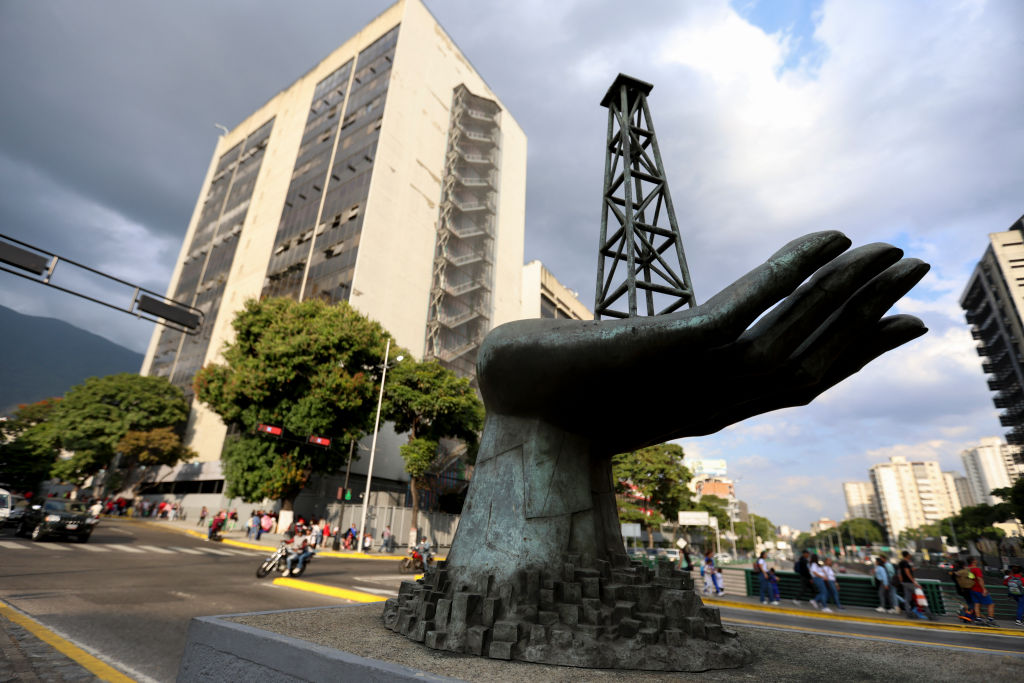Chile Update: Energy Policy
Chile Update: Energy Policy
With elections in December, the next president of Chile will, like counterparts across the region, face challenges to ensure the country’s continued socioeconomic prosperity. Santiago looks to renewable energy, liquid natural gas, and potentially nuclear power to satisfy its energy needs.
With elections in December, the next president of Chile will, like counterparts across the region, face challenges to ensure the country’s continued socioeconomic prosperity. One difficult choice will be determining Chile’s energy path. The policies adopted by the new administration to tackle renewable energy, hydroelectric power, and the highly controversial issue of nuclear energy development will affect the country’s future role as a regional market leader.
Chile has shifted course from its traditional reliance on imported fossil fuels and homegrown, weather-dependent hydropower, and in 1995 lifted constraints that had limited the amount of gas imported from Argentina. This opening up of the two-way gas trade led to the construction of an extensive network of natural gas pipelines connecting Argentina with its energy-strapped neighbor. The result is that Chile has relied on Argentina to supply up to 90 percent of its natural gas—a quarter of the total energy mix—and while gas-rich Bolivia would seem a natural supplier, it has historically refused to sell gas to Chile due to a long-standing territorial dispute.
Relying so heavily on Argentina has come with challenges. Since 2004, domestic energy crises have led Argentina to restrict natural gas exports, completely cutting off the supply to Chile on several occasions, sometimes without warning. Each time, fuel prices in Chile have skyrocketed and energy shortages have forced industries to substitute natural gas with diesel, a major polluter.
Chile’s answer to its energy challenges is to press forward with efforts to incorporate more alternative and renewable energy into its power equation. Legislation passed in 2008 requires renewable energy to account for at least 10 percent of the energy supplied by Chile's electric utilities by 2024. Power providers must integrate renewable energy sources—such as wind, solar, and small hydropower—into the power supply, progressively increasing the amount to meet the 10 percent goal or face fines.
On the nuclear front, Chile’s interior and energy ministers claim that nuclear power could be a viable, long-term solution for meeting energy demand. But they face formidable opposition from environmental leaders who consider nuclear energy development an unnecessary hazard given the country’s abundance of other energy sources.
President Michelle Bachelet has postponed the nuclear decision. While the three leading presidential candidates—Eduardo Frei of Concertación, Sebastián Piñera of Alianza, and independent candidate Marco Enríquez-Ominami—have all advocated diversifying Chile’s energy supply, their views toward the nuclear option vary.
Of the three candidates, Frei is the most supportive of nuclear energy. He has said that he would create a nuclear energy agency to study the possibility. For his part, Piñera has called for more research into non-conventional renewable resources as well as nuclear energy. However, citing high costs and Chile’s earthquake vulnerability, Piñera has not openly endorsed the construction of nuclear power plants. Independent candidate Marco Enríquez-Ominami has won the backing of environmentalists by championing energy efficiency and renewable energy and ruling out nuclear power as an energy solution.
Foreign Investment and the LNG Trend
Chile has begun to look beyond its immediate neighbors for energy financing, courting international investors who have continued to fund renewable power projects despite the global economic downturn. Foreign investment has been facilitated by Chile’s stable regulatory framework and by the UN Clean Development Mechanism, which allows developing countries to earn certified emission reduction credits for projects that reduce emissions, including renewable energy ventures. These credits can then be traded and sold, and industrialized countries can use them to help meet emissions reduction targets established by the Kyoto Protocol.
Chile joined a Southern Cone trend toward liquid natural gas (LNG) with the construction of two LNG regasification terminals in Quintero and Mejillones. Quintero began operating this year and Mejillones is expected to come online in 2010. Declining natural gas output in Bolivia and the increased cost of Bolivian gas have also led Brazil and Argentina to construct their own LNG terminals. In 2008, Argentina and Brazil both completed construction of their first LNG plants. Brazil is now building its third, aiming to have it ready by 2013. A terminal jointly managed by Argentina and Uruguay could be operational in Uruguay by 2012.
Energy Minister Marcelo Tokman has lauded Chile’s terminals as an environmentally friendly way to diversify energy sources and secure gas supply. Natural gas from Mejillones will service mining operations in Chile’s northern region; gas from the Quintero plant will be used for regional industry and the domestic market in Santiago. Still, natural gas accounts for just 2 percent of Chile’s power generation.
Given its limited supply of fossil fuel resources and increasing energy demand, Chile will continue to rely on natural gas and oil imports from Argentina in the short to medium term. LNG imports from other suppliers such as Asia and Russia could help. But as demand for LNG continues to rise, higher prices could reduce the fuel’s comparative advantage over diesel, a heavy polluter and historically more expensive fuel option.
While renewable energy will remain a small portion of Chile’s total energy matrix for the foreseeable future, projects in hydropower, biomass, biogas, wind, and solar energy are receiving increased government and private-sector support. Even though none of the presidential candidates has proposed a fully developed plan for addressing Chile’s pending energy crisis, Frei, Piñera, and Enríquez-Ominami have each proposed measures that would begin to alleviate heavy reliance on fuel imports and increase energy security.
Chile has a choice to make. The next president’s response to Chile’s energy dilemma will mean more than debate between environmentalists and the pro-nuclear lobby; it could very well determine the future economic direction of the country.








